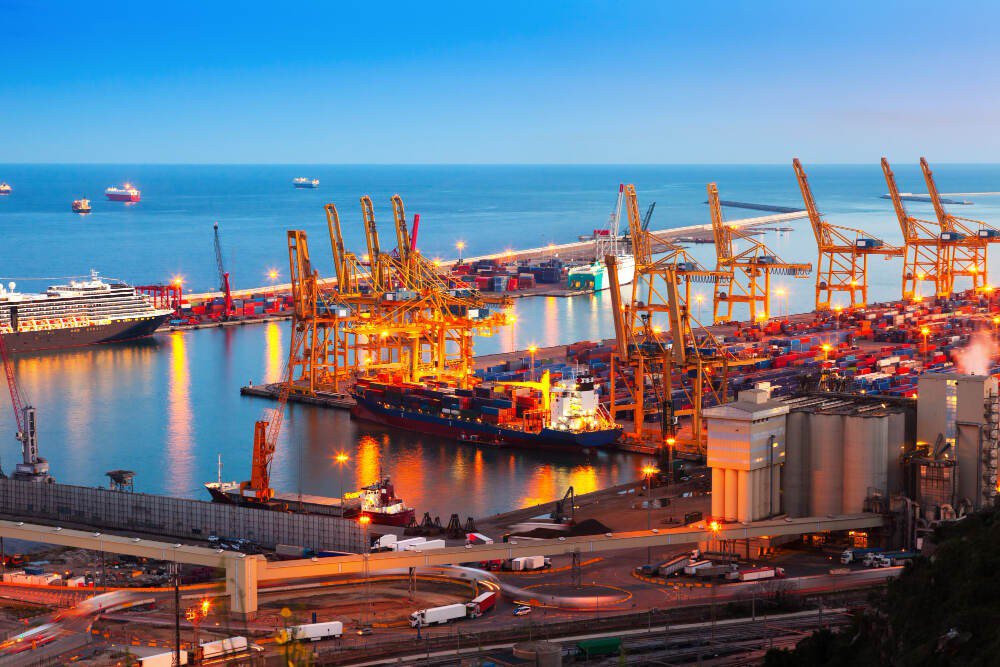
The ocean freight industry is undergoing a massive transformation, as the technology and supply chain management tools are being improved by the day, impacting ocean freight rates. The rising demand for e-commerce, increasing scale of individual shippers and increased competition in ocean freight shipping are some of the key trends reshaping this industry. In this blog we are talking about Freight Shipping Industry Forecast 2023.
Trends Reshaping Ocean Freight Industry
1. Rising Demand For E-Commerce
The global e-commerce market is expected to grow at a compound annual rate of 12% from 2020 to 2023, according to Gartner. This will lead to an increase in online orders across all types of products, including those that have traditionally been shipped by air or truck. In fact, almost half (48%) of retailers worldwide expect their online revenues will increase over the next three years (2020–2023).
The ocean freight shipping industry is the backbone of international trade, with more than 90 percent of world trade by volume carried through the ocean. However, overcapacity, slow growth and low rates have led to losses in the last few years.
In 2016, for example, there were more than 100 container ships traveling from South America to Europe at any given time—that's about 2 million containers every week! As a result of this extreme overcapacity—and as a consequence of new technology like autonomous vehicles (AVs) becoming more common on land—there are fewer ships available for transport in many parts of the world today than there were ten years ago.
2. Increased in Efficiency Due to Digitization
Advances in automation, digitization and a recent uptick in world trade are expected to drive efficiency and profits for ocean carriers in 2023.
In the past decade, automation has been a key trend reshaping the ocean freight market. The introduction of advanced technologies like artificial intelligence (AI) and machine learning is helping ships navigate faster, more accurately and with greater efficiency. This will help carriers improve their overall performance while also saving money on fuel costs.
Digitization is another important trend that will have a major impact on ocean carriers in 2023. Digitization means digitizing every aspect of an operation—including cargo handling processes such as loading and unloading cargo from vessels onto trucks or trains—and automating them so they can be completed quickly without human intervention. This helps reduce labor expenses by reducing repetitive tasks that require manual labor; it also improves visibility into processes through real-time monitoring systems installed throughout shipping facilities.
3. Developing New Technologies
To be successful over the next five years carriers will need to adopt new technology quickly, create innovative operational models and provide greater value for their customers.
To achieve this, they will need to lead with their technical skills as well as embrace the new technologies that are being developed. For example, blockchain has been touted as a key enabler of transparency in supply chain management but it also provides opportunities for new ways of working with customers who want secure data transfer across multiple industries.
Another area where carriers can improve performance is through innovation in product development. They could use data from previous shipments to predict future demand and provide better delivery options based on what’s needed at each point along the journey (e..g., temperature sensitive goods), which would help reduce risk during transportation while increasing efficiency overall – leading ultimately back into your pocket sooner rather than later!
4. Growth in Global Market
According to a report from Stratistics MRC, the Global Ocean Freight market is expected to grow from $170.78 billion in 2016 to reach $280.45 billion by 2023 with a CAGR of 7.4%.
The global ocean freight market is expected to grow from $170.78 billion in 2016 to reach $280.45 billion by 2023 with a CAGR of 7.4%.
The growth is driven by increasing demand for lower shipping costs and reduction in bunker prices, as well as increased use of digital technologies such as Global Positioning System (GPS) which allow container ships to navigate efficiently through the waters around the world.
5. Reduction in Bunker Prices
Shipments that once traveled via truck or rail will move by water vessels due to an increasing demand for lower shipping costs. The reduction in bunker prices has also helped drive down shipping costs.
As the demand for lower shipping costs continues, ocean freight shipments that once traveled via truck or rail will move by water vessels due to an increasing demand for lower shipping costs. The reduction in bunker prices has also helped drive down shipping costs.
The current market is an indication that this trend will continue into 2023 as more companies begin using ocean freight to get their products from point A to B at a lower cost than ever before.
6. Increased Visibility
Container ships will become more efficient as they utilize digital technologies that streamline operations with improvements in connectivity between port operators, shipping companies and cargo owners. This will lead to increased visibility into shipment status and schedules.
In the future, container ships and container shipping costs will become more efficient as they utilize digital technologies that streamline operations with improvements in connectivity between port operators, shipping companies and cargo owners. This will lead to increased visibility into shipment status and schedules.
This is a result of the integration of new technologies that allow for improved collaboration between stakeholders such as ports, carriers and shippers. For example, it’s possible to use the same database for all parties involved in an ocean freight transaction; this helps simplify communication among them.
Conclusion
We believe that the future of logistics and transportation industries is bright and it can only get better from here. Ocean carriers have realized that they need to innovate quickly if they want to survive and we expect them to do just that in 2023. We look forward to seeing how this technology will impact the ocean freight market.





 Get instant quote
and compare offers in real time
Get instant quote
and compare offers in real time